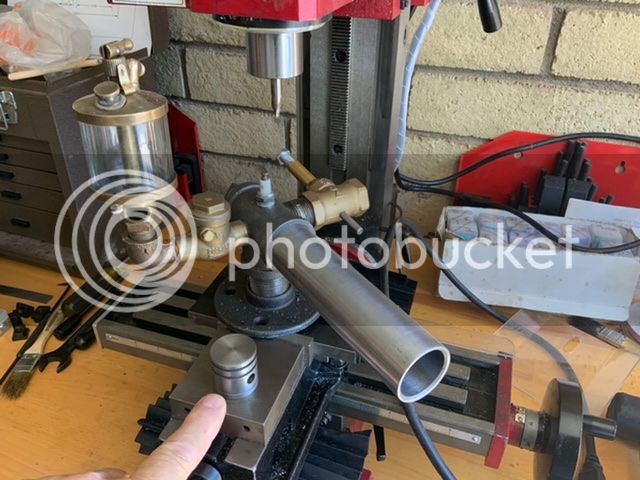a41capt
Well-Known Member
An excellent write up indeed! However, and this is just my opinion based upon my observations regarding your photos, I believe Mr. Ford modified his original ignition system to make it a more consistent and reliable concept engine at a later date y adding a spark plug. The protuberance on the combustion chamber that you mention appears to be nothing more that a plugged hole, probably the original location for the make and break ignition. Its position would be more conducive to ignition in an after top dead center make and break.
Additionally, the pice you refer to as a gas igniter is indeed a spark plug of the 1915ish (?) vintage and appears (if my theorizing is correct) to have been added later to support that more reliable ignition and running with a buzz coil or something similar.

Additionally, the contact ground wire hitting the cam at just after tdc is a unique way to ensure that the ignition system is energized on a 4 to 1 ratio. Simplicity at its finest!
Another interesting point regarding the combustion chamber is the apparent offset of the intake versus exhaust ports. Once again, as Henry was a steam plant engineer, he understood the importance of valve timing in the cutoff principle, and with the intake port all but closed off by the forward movement of the piston in the exhaust stroke, there would be absolutely no exhaust pressure against the intake system, thereby ensuring that the waiting fuel charge would not be blown back out of the mixing chamber by the leakage of high temp gases at the swing valve.
Having never been in close proximity to the original engine, but after studying your exhaustive photographic records, that is just my two cents worth, and since I will probably never get the access you have had, I can draw no further conclusions than what I’ve included.
Thank you again for this excellent treatise on this valuable bit of engineering. I am considering a build of a replica myself, and I’ll most certainly use your very extensive volume of work as a backbone to my build!
John W
Additionally, the pice you refer to as a gas igniter is indeed a spark plug of the 1915ish (?) vintage and appears (if my theorizing is correct) to have been added later to support that more reliable ignition and running with a buzz coil or something similar.

Additionally, the contact ground wire hitting the cam at just after tdc is a unique way to ensure that the ignition system is energized on a 4 to 1 ratio. Simplicity at its finest!
Another interesting point regarding the combustion chamber is the apparent offset of the intake versus exhaust ports. Once again, as Henry was a steam plant engineer, he understood the importance of valve timing in the cutoff principle, and with the intake port all but closed off by the forward movement of the piston in the exhaust stroke, there would be absolutely no exhaust pressure against the intake system, thereby ensuring that the waiting fuel charge would not be blown back out of the mixing chamber by the leakage of high temp gases at the swing valve.
Having never been in close proximity to the original engine, but after studying your exhaustive photographic records, that is just my two cents worth, and since I will probably never get the access you have had, I can draw no further conclusions than what I’ve included.
Thank you again for this excellent treatise on this valuable bit of engineering. I am considering a build of a replica myself, and I’ll most certainly use your very extensive volume of work as a backbone to my build!
John W





